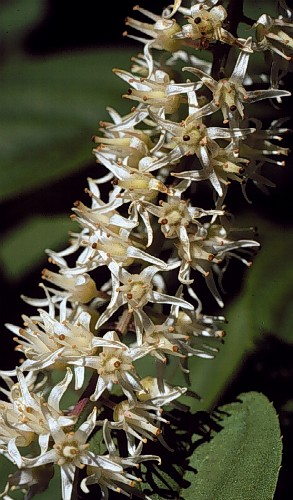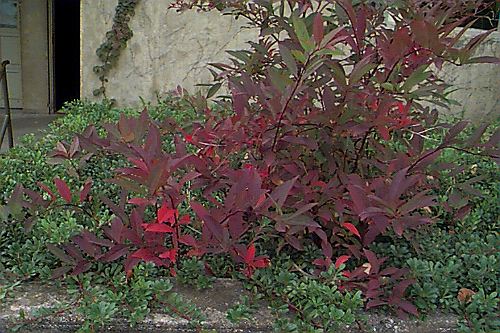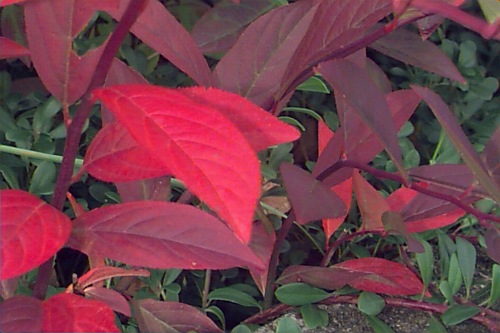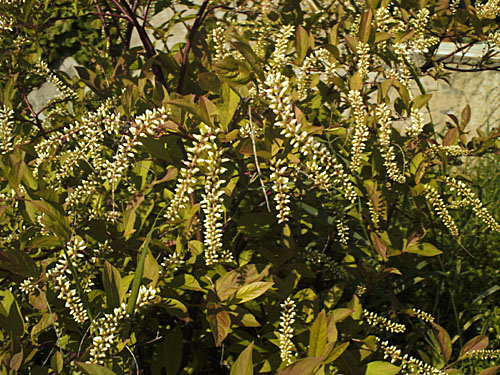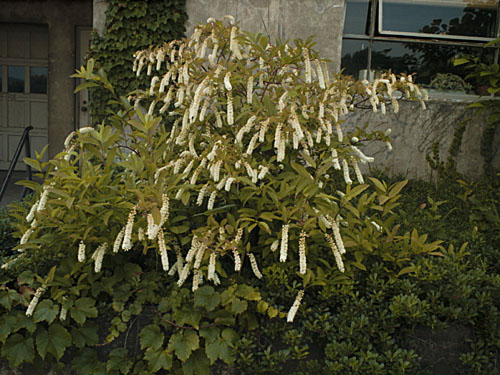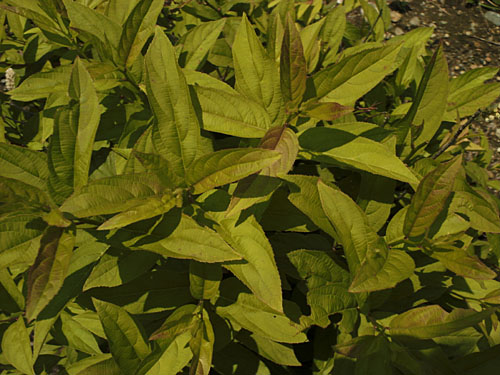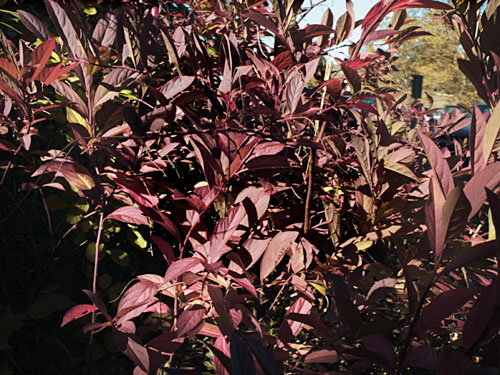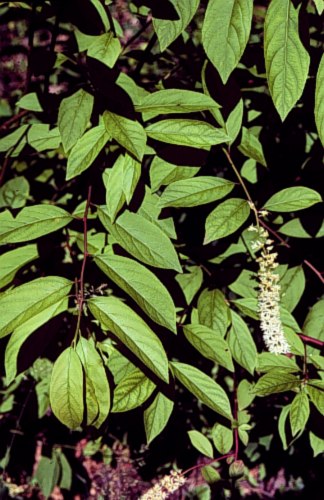Itea virginica
Virginia Sweetspire, Virginia-willow
Saxifragaceae
ExpandHabitat
- southern United States, as far North as New Jersey
- zone 6, probably 5 as well
Habit and Form
- a deciduous to semievergreen shrub
- generally 3' to 6' tall in the landscape
- multistemmed, suckering and colonizing plant
- stems branch in frequently except at the tops
- individual shoot rise up and then arch over to some degree
Summer Foliage
- alternate leaf arrangement
- elliptical leaves with an acute apex
- leaves are 1.5 " to 4" long and 0.75" to 1.25" wide
- leaf margins are very finely serrated
- leaf color is medium to dark green and the leaf surface is glabrous
Autumn Foliage
- fall color is spectacular and long-lasting
- a mix of yellow, orange, crimson and maroon
Flowers
- 2" to 6" long
- racemes of small white flowers
- bloom time is June
- flowers are lightly fragrant
- quite showy in bloom
Fruit
- non-ornamental, small capsules
- persists through the winter
Bark
- stems are purple red on the sun-exposed side and green on the opposite side
- glabrous
Culture
- full sun to partial shade
- best growth in fertile, moist soils
- pH adaptable
Landscape Use
- useful for early summer bloom time
- good for naturalistic planting
- displays best in large masses or colonies
- excellent for fall foliage color
Liabilities
- relatively free from pests
- lack of cold hardiness below -20oF can be problematic
ID Features
- alternate leaves
- superposed buds
- glabrous green and red stems
- suckering, colonial growth
- arching shoots
- white flower racemes in June
Propagation
- by seed
- by cuttings
Cultivars/Varieties
'Henry's Garnet' - An award-winning plant that has been universally accepted by horticulturists, this form is also adaptable to colder climates. The white flowers are borne in 6" long racemes and the fall color is a rich red-purple that often persists into late fall. The ornamental traits of this suckering, 4'-6' tall plant are superior to the species.
'Long Spire' - A form notable for it's 8" flower racemes, this new selection appears to have poorer fall color than 'Henry's Garnet'. The growth habit is vigorous, but hardiness in cold climates is untested.
'Sarah Eve' - This form was selected for its pinkish flowers, but the effect is not overwhelming. Fall color is relatively poor and the plant appears to be less hardy than other forms.
'Saturnalia' - This cultivar is reported to mature at a smaller size than the species and feature better fall color. Observations indicate a mature size similar to 'Henry's Garnet' and inferior fall color.
'Sprich' (Little Henry™) - Marketed as a dwarf form, observations indicate that this plant will approach the size of 'Henry's Garnet'. The mounded plant sports smaller, 3"-4" racemes of flowers.
'Shirley's Compact' - A curiosity at best, this tiny form will probably fail to flower or exceed 12" in height. It resembles a green bun and is probably best reserved for collectors. It was discovered at the Biltmore Estate in North Carolina.



